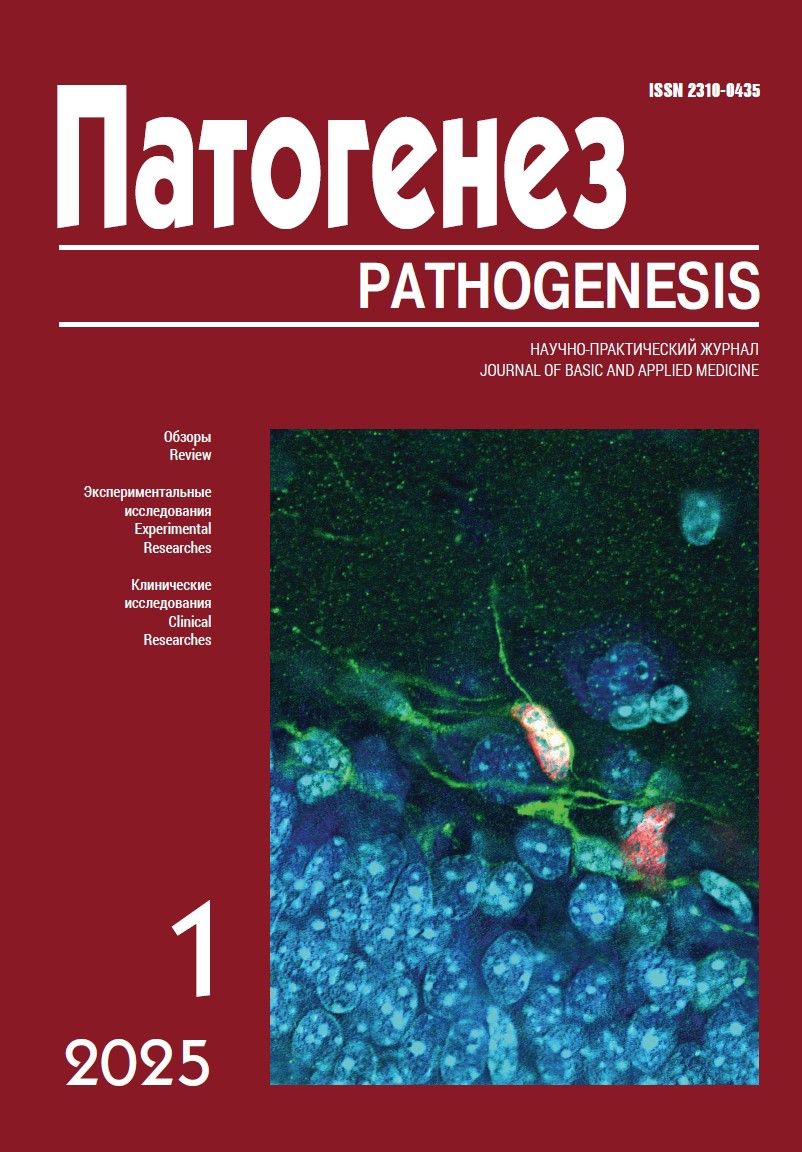Skeletal muscle response to electrical stimulation after infection of the intramedullary canal of the rat femur
Abstract
Relevance. Skeletal muscles in osteomyelitis can be contaminated with infectious agents and be sources of disease recurrence.
Purpose. To evaluate changes in skeletal muscles in response to direct electric current after infection of the intramedullary canal of the rat femur.
Material and methods. The study was performed on 20 male Wistar rats, which were injected with a bacterial suspension of Staphylococcus aureus into the bone marrow canal of the femur. In the animals of the first group (n = 6), electrical exposure began on the day of surgery and then on the 2nd, 4th, 6th day after infection; in the second group (n = 6) – on the 7th, 9th, 11th, 13th day after infection. Electrical exposure was carried out at a current of 150 μA for 1 minute. Electric exposure was not carried out in the animals of the control group (n = 8). On the 21-st day after infection, histological, biochemical, hematological and microbiological studies were performed.
Results. It was found that on the 21-st day after infection, S. aureus was detected in the intramedullary canal of the femur in all eight animals of the control group, in two animals of group 1, and in three animals of group 2. Contamination of the quadriceps muscle of thigh was noted in animals of the control group. It was noted that in animals of group 2, the volume of myosymplasts in the quadriceps muscle of thigh was 112%, microvessels – 220%, nuclear component – 209%, endomysium – 37% of the corresponding parameters of group 1 (differences are significant at р < 0.05). Also, in animals of group 1, the activity of creatine phosphokinase in the blood serum was higher than the values of group 2 by 42% (р < 0.05). An increase in the number of platelets was noted in rats of both groups with electrical exposure.
Conclusion. The effect of direct electric current on the femur suppresses microbial activity in the thigh muscles when the electrical action begins on the 7th day after infection. Electrical action can be considered as a method for preventing infection of bone and muscle tissue in patients with osteomyelitis.




